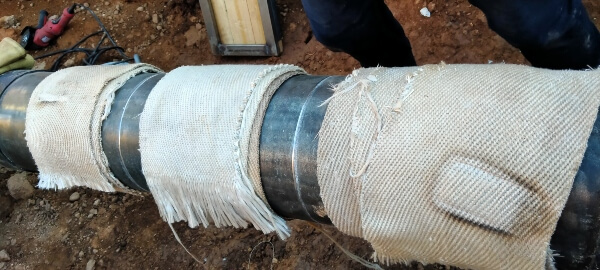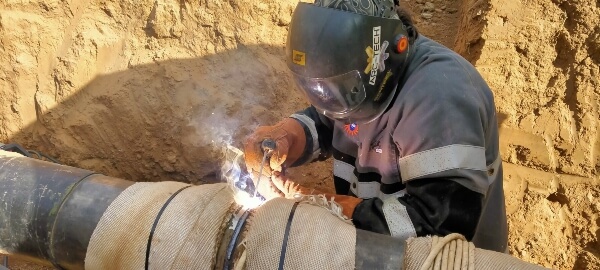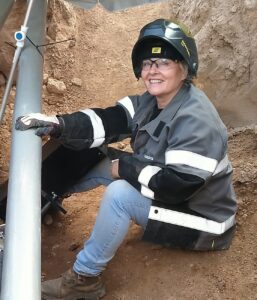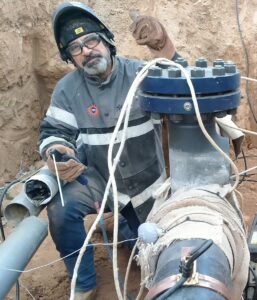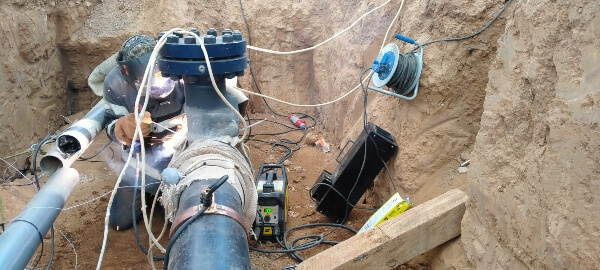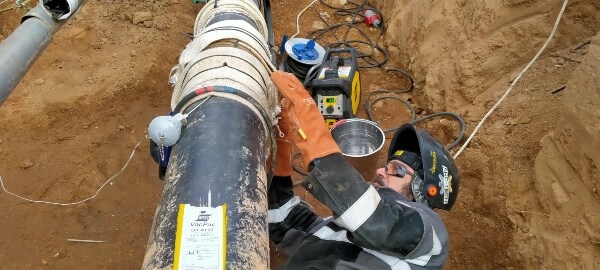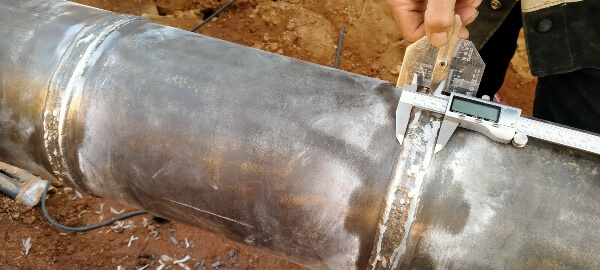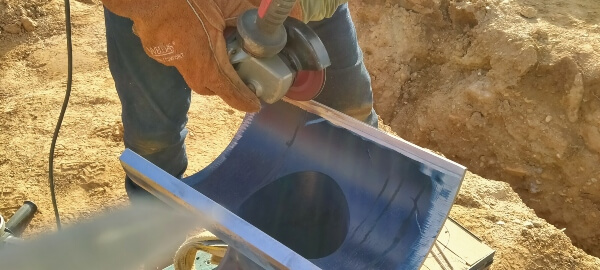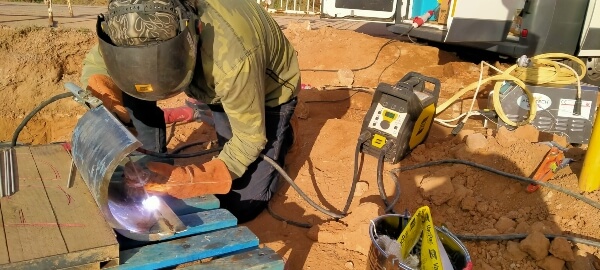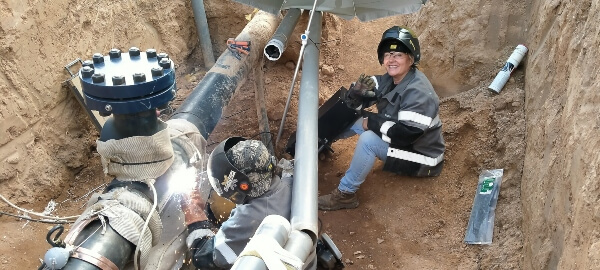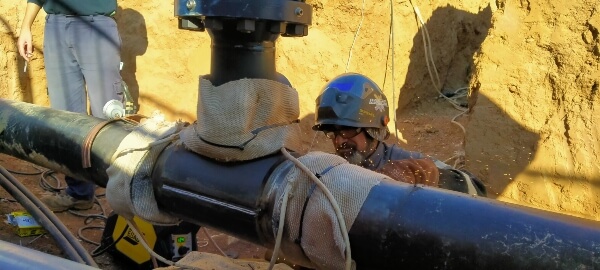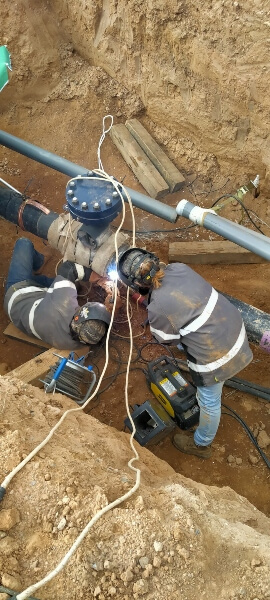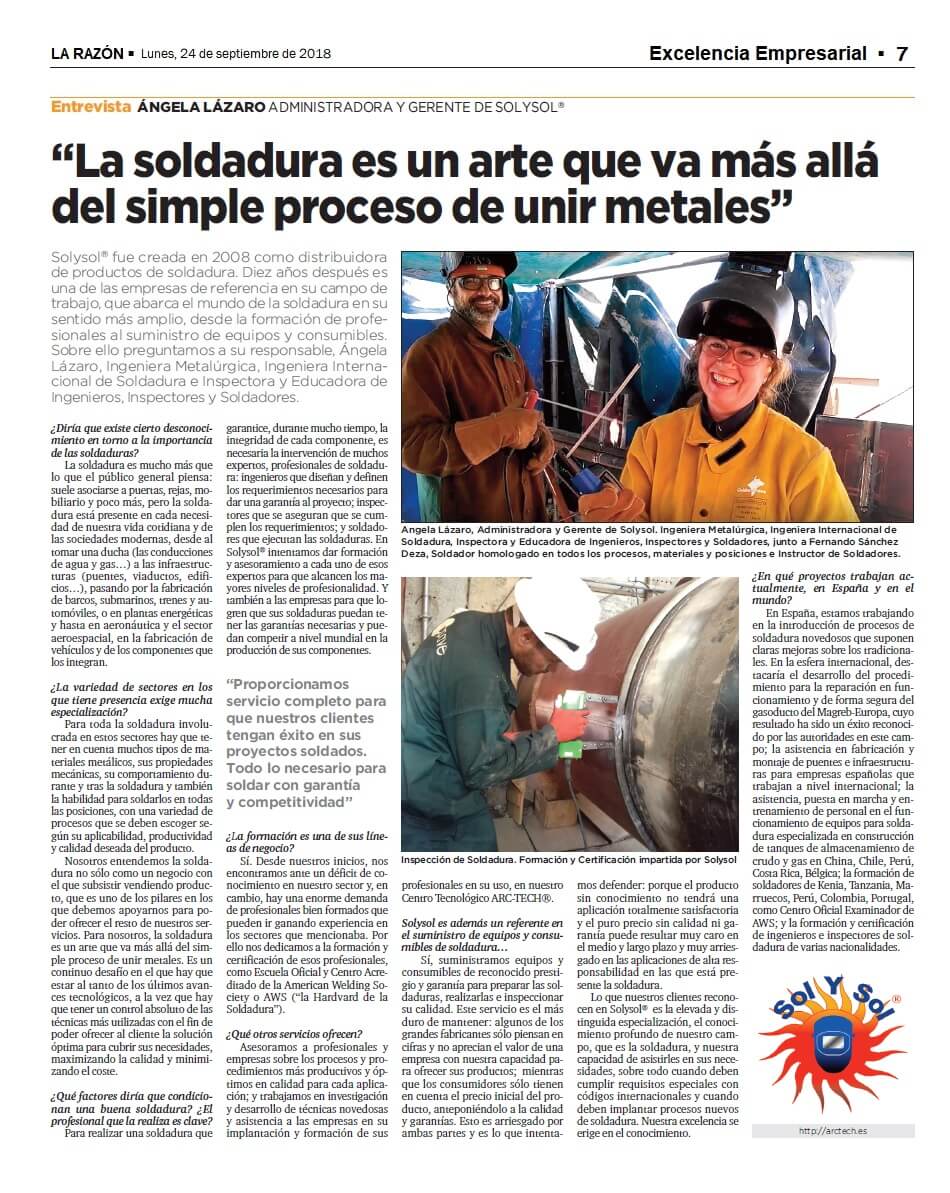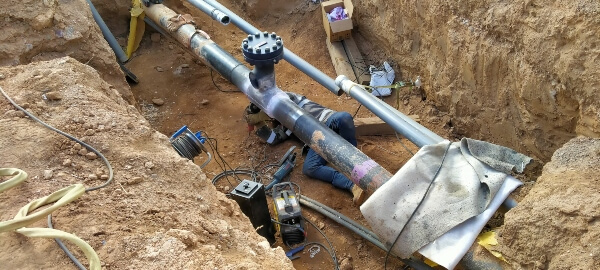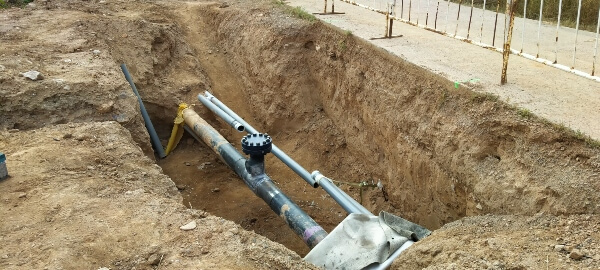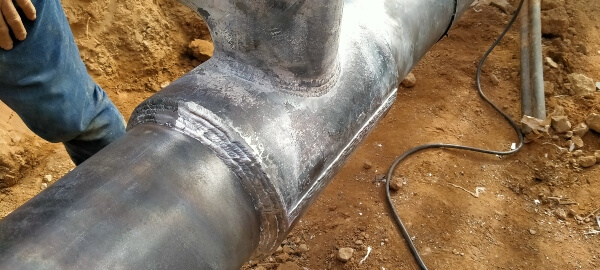Project Description:
 Welding of a Way-Tee in a natural gas pipe line.
Welding of a Way-Tee in a natural gas pipe line.
During the project, the pipe is at full gas load, pressure and flow to feed the Repsol Cartagena refinery.
This is a dangerous operation, but essential for pipe repairs or for adding another gas line from the main pipe.
The indispensable step prior to carrying out the work is the qualification of the welding procedure, and of course, to have perfectly qualified welders to execute the job. Welds are made on specimens with characteristics similar to those of the work to be carried out and all the properties to be met are tested. If the results are positive, the Welding Procedure is qualified (WPQR).
Before starting to weld and during the whole process, the area to be welded must be kept at a temperature of 100-120ºC, to ensure that the pipe wall affected by the welding, remains tough and thus avoid cracking in that area. Temperature will also influence that the properties of the pipe remain the same and so, its programmed service life is not affected. This can be ensured if the essential parameters of the Welding Procedure (WPS) are respected.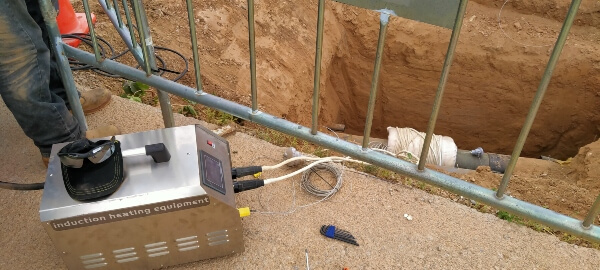
Heating is difficult because the gas flows at a high flow rate through the tube at a temperature of about 15ºC, which continuously cools the area to be kept hot for welding.
The modern induction heating equipment that Solysol has incorporated is of essential use in this highly responsible work.
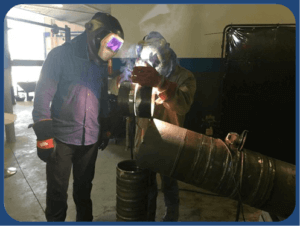
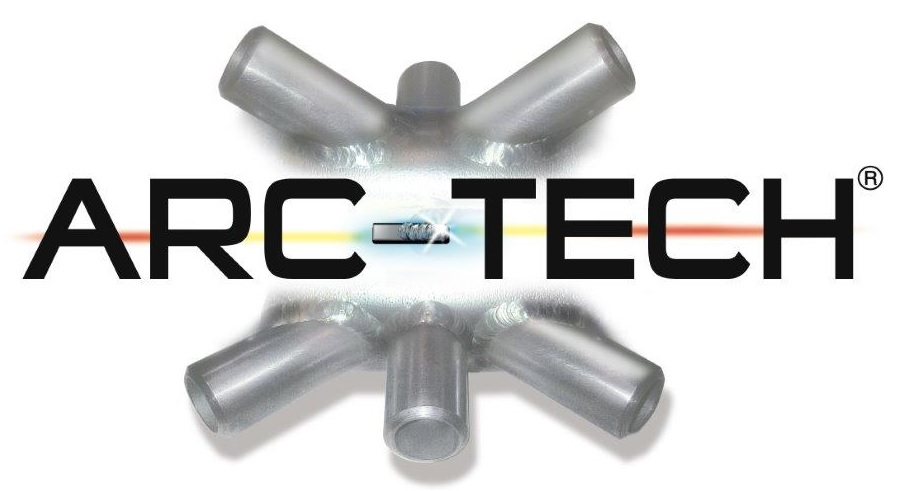
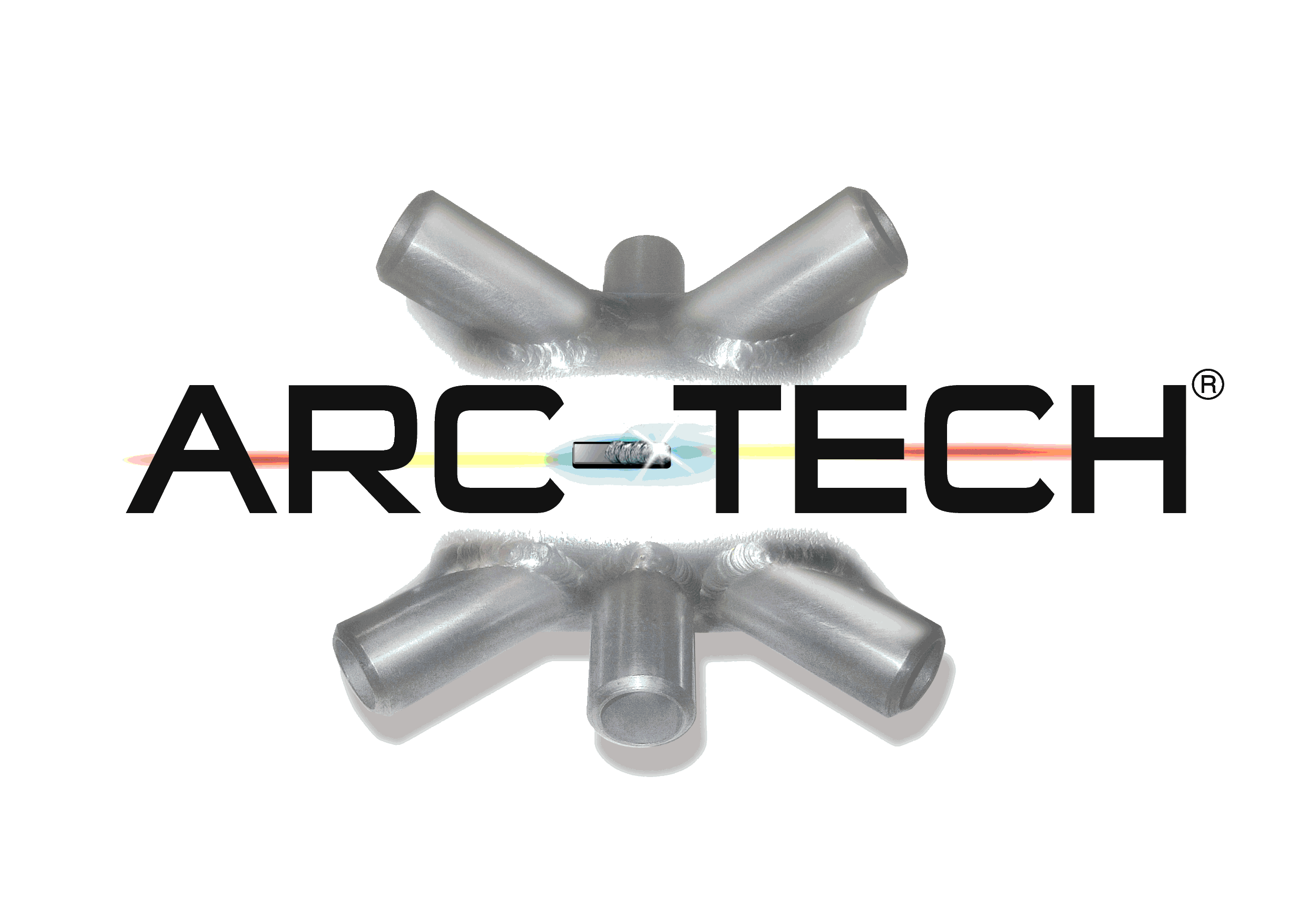
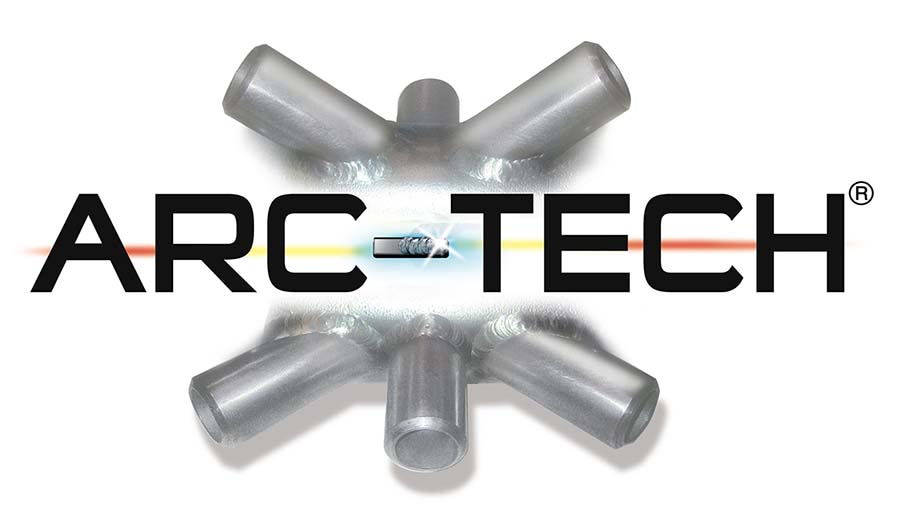

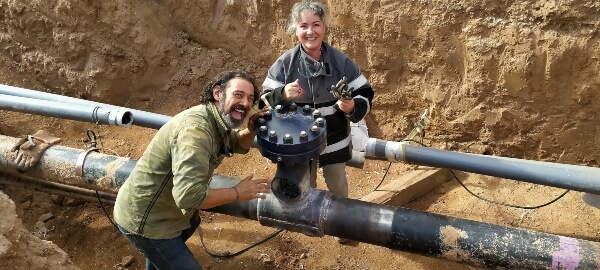

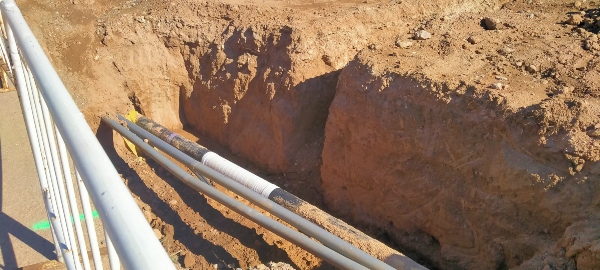
 Welding of a Way-Tee in a natural gas pipe line.
Welding of a Way-Tee in a natural gas pipe line.

